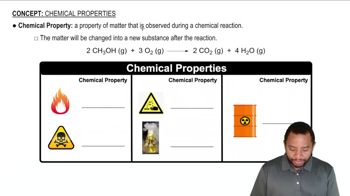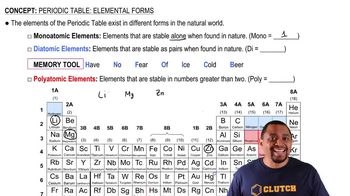Here are the essential concepts you must grasp in order to answer the question correctly.
Chemical Reactions
A chemical reaction involves the transformation of reactants into products, characterized by the breaking and forming of chemical bonds. In a balanced chemical equation, the number of atoms for each element must be equal on both sides, adhering to the law of conservation of mass. Understanding the types of reactions, such as synthesis, decomposition, and single or double displacement, is crucial for predicting the outcomes of reactions.
Recommended video:
Balancing Chemical Equations
Balancing chemical equations is the process of ensuring that the number of atoms of each element is the same on both sides of the equation. This is achieved by adjusting the coefficients of the reactants and products without changing their chemical identities. A balanced equation reflects the conservation of mass and allows for accurate stoichiometric calculations in chemical reactions.
Recommended video:
Balancing Chemical Equations
Reactivity of Elements
The reactivity of elements, particularly metals and halogens, determines whether a chemical reaction will occur. Calcium, a reactive alkaline earth metal, can react with halogens like bromine (Br2) to form calcium bromide (CaBr2). Understanding the periodic trends and the nature of the elements involved helps predict the likelihood of a reaction and the products formed.
Recommended video:
Elemental Forms of Elements

 Verified step by step guidance
Verified step by step guidance


